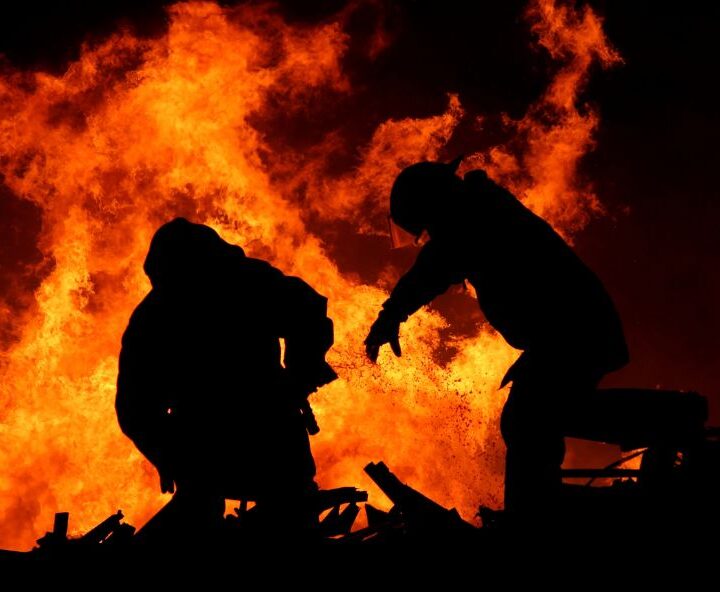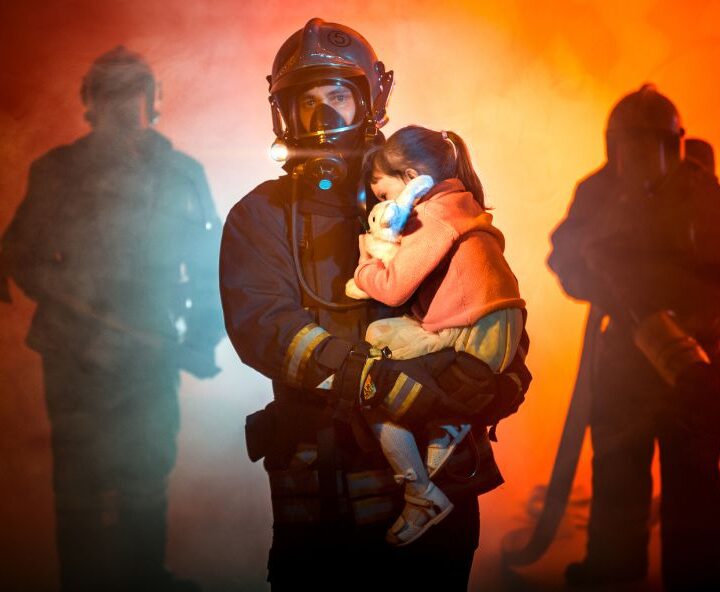Industrial Emergency Responders – Secrets you MUST know

Blinded by the Bias – Emergency Response
February 6, 2023
Will the Real expert Please Stand Up!
February 6, 2023Industrial Emergency Responders – Secrets you MUST know … In 2019 a review of Australia’s Education and Training System was conducted:
Amongst numerous significant findings the following is relevant to this conversation:
- The continuing presence of ‘tick and flick’ rogue providers.
- Courses are getting shorter and shorter for example 6-month courses are being conducted over a 3-day weekend.
- Students are not always meeting the definition of competency.
- Company’s and industry are supporting a rushed training process by going to `Dutch Auction` i.e. cheapest rogue provider wins.
My thought on this reviews relevance to our industry…
Illuminating Point 1
Professional firefighters undergo a three month recruit course, it is often the same number and type of units that a Certificate III in Mine Emergency Response and Rescue course undertake, in some cases and with some particular providers this Cert III In Mines Rescue is delivered in 10 days; both occupations are qualified Emergency Responders but are they as proficient and capable as each other?
“You can never over prepare for a job that can take your life; let alone required to save someone else’s”.
Illuminating Point 2
After completing a 10 day Certificate III in Mine Emergency Response and Rescue a newly developed and underdone responder can then sit through a fast-tracked Trainer/Assessor program; next, with the backing of a Registered training organisation (RTO) can now train and assess Cert III Mines Rescue under the guise of or implied experience and qualified; with little to none on the job experience.
It has been reported that some of these types of trainers are “walking” students through the theory assessment – and providing the answers as they go”.
Illuminating Point 3
Certificate III in Mine Emergency Response and Rescue, Certificate II and Certificate III in Fire and Emergency Operations all qualifies a person “operate as part of a team” ; it DOES NOT qualify people in Incident Supervision, Hot Zone Management or Team Leadership.
In emergency response, these dedicated qualifications start at Certificate IV Firefighting Supervision. The Safety Act, Codes of Practice and such are very clear about allowing people to conduct duties or activities in which they are not qualified in.
Informative Point 4
A Certificate IV or a Diploma in Firefighting Supervision in a uniformed service i.e. Fire Department is a dedicated two-year study program consisting of numerous theory lessons, personal studies, mentoring and countless tutorials, walk-throughs and practical incident Management drills or exercises.
It teaches Size Up, Prioritising and Tasking of troops across numerous incident types and by default has a reasonable student failure and re-sit percentage.
Some RTOs RPL these important qualifications, without any training, displayed practical ‘current competency’ or ‘demonstrated capability’.
Instead they ask the applicant to provide third-party references; these are often written by unqualified or quantified persons. I.e. persons who themselves do not have the qualification.
Illuminating Point 5
Why do some training organisations choose to do ‘face to cafe’ training only?
Face-to-Face is old fashion it lacks vision and consideration for the client and the student. Face to Face training is time consuming for your staff and business – it also comes at a cost of production.
It has been the case where your training providers on-site representative will read from poorly developed powerpoint slides; this `read as you go‘ approach lacks professionalism and subject knowledge, it can also be carryout by any trainer, the best trainer isn’t required.
Face to face dictates WHEN and HOW the trainee receives the underpinning knowledge required, when delivered in a condensed (short) course it becomes time-based and time pressured, therefore lacks flexibility and consideration for each individual’s learning needs or ability.
Rushed face-to-face is inconvenient and regularly lacks the underpinning knowledge content required; it often also falls well short of the essential nominal hours that traditionally should be considered.
It’s important that students know WHY (underpinning knowledge) they are doing the HOW (underpinning skills).
Illuminating Point 6
The training provider does ‘online` training.
Let’s face it, on-line training is so much cheaper to develop than eLearning, it is often no more than a cut and paste from a manual or workbook; on-line allows for IT to enter information extracted from a handbook, rather than engage an industry subject matter expert; as a student you have to go through the one dimensional reading, without context, engagement and entertainment, therefore lacks true education opportunity. In some cases, a provider has the exam question of the same screen page as the given answer – poor form I say.
Illuminating point 7
Ask and scrutinise; is this provider a true expert in this subject, is this their core business? Do they specialise in this particular aspect of industry – where did they start from Security, Medical? Do their staff come from the elite end of the experience spectrum? Or are they simply acting on dollar opportunity over in Rescue?
Illuminating point 8
It is important to know and understand without motive what ‘best practise’ really looks like. Current ‘Industry Behaviour and Habits‘ can be wrong and should not be quoted nor mistaken for ‘Industry Standards‘ or ‘Best Practise’.
How do we fix these abnormalities to our profession?
Ask your current or potential providers these important questions;
- Are they a true fire rescue / mines rescue provider or modified and acting on opportunity?
- Does their management have long-term fire and rescue applied experiences and high-end qualifications? I.e. associate degrees in emergency management at least of which were studied on a two-year course; as compared to the 7-day one snow being offered.
Also do these managers come from an exclusive fire and rescue background – where they once were full-time firefighters with a professional industry leader? They themselves in turn have the following; Cert II, Cert III, Cert IV and a Diploma in firefighting operations and experiences in fire incident management. - Do they have a full suite of emergency management and emergency response provisional and tactical documents to support their operational staff?
- Is the training or capability provider affiliated, associated or have a connection with or recognised by any of the world’s leading Fire Authorities i.e. The Institute of Fire Engineers (IFE) or such?
- What modern, controlled and measured support mechanism do they provide to their ESO Responders, are they backing their own staffs ‘professional development‘ and that of the people put under their charge?
- Australia`s annual industrial injury and death toll is going up – could this be on par with our accepted behaviours in lowering training standards and nominal hours?
Call to Arms
- Be alert to providers who are described in the 2019 review of Australia’s Education and Training System.
- Be aware of shortened courses/programs that do not regard nominal hours necessitated and recommended by industry leaders.
- Stay alerted to ‘tick and flick‘ training providers; i.e. if everyone passes all courses and no rechecks are ever required; as a qualified auditor this would set off alarm bells to me.
- Seek a provider who has a commitment to the required detailed and applied underpinning knowledge and underpinning skills – rather qualification at any cost.
- Allow your staff the right to learn from companies/trainers who have experiences and
qualifications that go far beyond rushed courses – yes, they cost more but are often well worth the investment. - Some providers are offering their clients rushed Team Leader or Officer in Charge programs – effective Incident Leaders don’t do Recognition of Prior Learning (RPL) nor rush these important qualifications; more so, studied and hone, as intended with the qualifications.
- It is worth noting – should a training organisation and or their RTO be suspended or closed by the regulators, it has been the case at times that Certificates of Attainment (Qualifications) issued by them in turn will be suspended and or not recognised, therefore your people no longer qualified.
As part of my Call to Arms – I encourage you to read and see the relevance of the ‘Dunning Kruger Effect‘ it best describes underdeveloped responders and their managers.
We need to step it up, we are the guardians of our industry; we can either stand idly by while undertrained responders are naively turning out (again refer to Dunning Kruger) ; or we can do something about it.
Our significant objectives should be to collectively drive the standards upwards; not to race each other to the bottom.
Retired Senior Fire Commander
Dean S Hawkins




